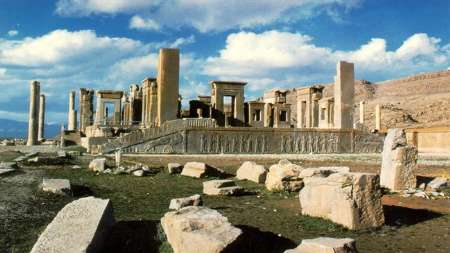
Once known as the richest city under the sun, Persepolis was the capital of the Achaemenid Empire. It was established as the most magnificent of the four Achaemenid capitals - Susa, Ecbatana, Persepolis and Babylon - which were founded in tactical locations to help Achaemenid kings efficiently administer their vast empire.
The palace complex was inspired by Mesopotamian model. It is situated 70 km from Shiraz, in southern province of Fars.
Architecture
According to archeological evidence, the remains of Persepolis dated back to 515 BCE. André Godard, a French archeologist, excavated the area in 1930. It is believed that Persian king, Cyrus, chose the location for building Persepolis, then King Darius I built the terrace and other palaces. The construction was done according to Achaemenid architecture.
King Darius ordered the construction of Council Hall and Apadana Palace. This construction was then completed during the reign of his son.
Gate of Nations
It consists of a huge hall with four columns. There are two doors, one opening to Apadana yard toward the south while the other in the direction of the east on to a long pathway.
A pair of bull-heads, Lamassus, stands by western threshold. Then another pair - with wings and a Persian head - stands firm on the eastern entrance reflecting the supremacy of the empire power. On the entrance, the name of Xerxes is carved in three languages, indicating that the construction was ordered by him.
Apadana Palace
Apadana Palace was the greatest palace built by Achaemenid king, Darius. Work on the palace started in 515 BCE and it took 30 years to be completed. The palace has 72 columns, of which 13 are still standing on huge platform. Each of the columns has heavy plinth and square Taurus. The apex of the columns have carved animal sculptures like lion, eagle or two-headed bulls
The walls are also adorned with interesting pictures of flowers, lion, bulls and so on. Darius also ordered the inscription of his and his empire's name on silver and gold plates under four corners of the foundation.
Throne Hall
The Throne Hall is second largest building next to Apadana. It has a 70X70 sq.m. hall whose construction started during the reign of Xerxes and was completed during the rule of his son, Artaxerxes.
Today, the ruins of Persepolis lie at the foot of Rahmat Mountain in Marvdasht Plain. It is located 650 km to the south of Tehran. Persepolis stands today as great example of Achaemenid dynasty.
Persepolis gained high fame and was declared as a symbol of Achaemenid dynasty in the past, which was the only reason why King Alexander III of Macedonia burned it in 330 BCE.
According to Greek Historian Plutarch, Alexander's army carried off 5,000 camels and 20,000 mules after plundering the place.
Darius had a vision for the future. He had planned the complex to include impressive palaces not just to mark his rule, but also the venue for receptions and celebration of festivals.
Persepolis was registered on the UNESCO World Heritage List in 1979.

Add new comment